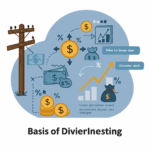Personal finance encompasses the management of individual or household financial activities, including budgeting, saving, investing, and debt management. In 2024, with economic uncertainties and technological advancements shaping the landscape, understanding these fundamentals is crucial for informed decision-making. This guide provides an educational overview of personal finance basics and emerging trends, helping readers deepen their knowledge without suggesting specific financial actions.
What is Personal Finance?
Personal finance refers to how individuals handle their money, from earning and spending to saving and planning for the future. It involves creating a financial plan that aligns with personal goals, such as buying a home, funding education, or preparing for retirement. Key principles include living within one’s means, building emergency funds, and understanding financial products.
Effective personal finance promotes financial security and independence, allowing individuals to navigate life’s uncertainties. With inflation and cost-of-living pressures persisting in 2024, mastering these basics can contribute to long-term stability.
Core Components of Personal Finance
Personal finance builds on several foundational elements:
1. Budgeting
Budgeting is the process of tracking income and expenses to ensure spending aligns with financial goals. Common methods include the 50/30/20 rule—allocating 50% to needs, 30% to wants, and 20% to savings and debt repayment. In 2024, manual expense tracking remains popular at 53.8%, while budgeting apps are used by 20.9% of people.
2. Saving and Emergency Funds
Saving involves setting aside money for future needs. An emergency fund, typically 3-6 months of living expenses, acts as a buffer against unexpected events. High-yield savings accounts or digital wallets are increasingly recommended amid fluctuating interest rates.
3. Debt Management
Managing debt includes understanding types like credit card debt, student loans, and mortgages. Strategies focus on prioritizing high-interest debts and maintaining good credit scores. In 2024, with higher prices forcing tough choices, effective debt management is vital.
4. Income and Earnings
Diversifying income sources, such as through side hustles or career advancement, strengthens financial resilience. Gen Z is particularly active in starting businesses, reflecting a shift toward entrepreneurial pursuits.
5. Insurance and Protection
Securing appropriate insurance covers risks like health issues or property damage, integrating with broader financial planning.
6. Retirement and Long-Term Planning
Planning for retirement involves contributing to accounts like 401(k)s or IRAs, considering factors like life expectancy and inflation.
Personal Finance Trends in 2024
The personal finance landscape in 2024 is influenced by technology, economic conditions, and consumer behaviors. Here are key trends:
1. Rise of Digital Banking and Tools
Digital banking is on the upswing, with consumers favoring apps for budgeting and automated savings. Automated micro-saving apps are becoming mainstream, and high-yield digital wallets are replacing traditional savings methods. Setting financial goals is practiced by 45% of individuals.
2. Shifting Consumer Mindsets and Confidence
Consumer confidence varies, with stability in some areas and uncertainty in others. A growing share of Americans anticipate their finances worsening in the next year, with only 49% demonstrating financial literacy. One in three report deteriorated financial situations midway through 2024.
3. Focus on Money-Saving Strategies
Trends include side hustles evolving into primary income sources and the use of spreadsheets for tracking. With difficulty paying bills at a two-year low of 43%, there’s optimism, but housing challenges persist.
4. Integration of AI and Technology in Finance
AI is transforming finance functions, with predictions on CFO trends and automation in budgeting. This includes AI-driven insights for better decision-making.
5. Emphasis on Financial Wellness and Literacy
Initiatives like financial calendars and resolutions highlight the importance of ongoing education. Only about 1 in 10 Americans feel completely secure financially.
6. Economic Influences
Higher prices are pushing more tough financial choices, with trends in tax cuts, student loans, and back-to-school spending affecting personal budgets.
Challenges and Considerations
Personal finance in 2024 faces challenges like rising costs and economic slowdowns. Maintaining a balanced approach, regularly reviewing finances, and staying informed are key to navigating these.
Conclusion
Personal finance in 2024 combines timeless basics with innovative trends driven by technology and economic shifts. By understanding budgeting, saving, and emerging tools, readers can enhance their financial knowledge and prepare for future uncertainties.
This content is for educational purposes only and not financial advice. Always conduct your own research or consult professionals before making decisions.


